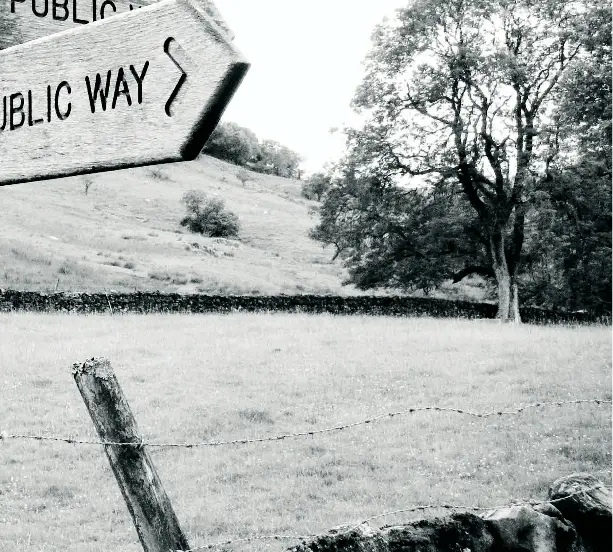There’s trails, and there’s cheeky trails. All too often those cheeky trails are the ones where all the fun lies. No amount of polite stopping for walkers, cheery thank yous and grateful smiles can hide the fact that, strictly speaking, you’re not supposed to be there. Scottish riders of course have no such troubles and are free to roam as far as their legs and tyres will allow them. A recent consultation on Welsh access rights showed a clear demand for increased access to the countryside for different types of activities. Hopefully the pressure to change the rules is now mounting, as today the two main cycling advocacy groups in the UK, British Cycling and Cycling UK has backed open letters to Environment Secretary Liz Truss and Welsh Environment Secretary Lesley Griffiths calling for people on bikes to have responsible access to more public paths in the England and Wales countryside.
The press release from British Cycling says:
Due to archaic public access and rights of way laws, it is currently illegal for people on bikes to access the majority of the countryside in England and Wales. At present, if you choose to ride a bike you only have access to less than a third of the 140,000 miles of public paths. There is also little access to the three million acres of Open Access Land or the 2,800 miles of newly created coastal access. Meanwhile, if you are on foot you have free and open access to all of this land.
Latest Singletrack Merch
Buying and wearing our sustainable merch is another great way to support Singletrack
British Cycling’s chief executive, Ian Drake, said:
“England and Wales is packed with outstanding countryside on millions of people’s doorsteps but, due to outdated and confusing rights of way legislation, much of it is only open to you if you choose to walk.
“We know that many people will simply not consider cycling unless they can do it on a traffic-free route. While national and local government work on putting cycle lanes in place across our towns and cities, countryside paths are fantastic, free alternatives that could be enjoyed responsibly by mountain bikers and families alike.
“At a time when obesity levels and air pollution in our cities is at an all-time high, we call on the government to act to make sure that the massive opportunity to get active in the countryside is not wasted.”

It is claimed that as a result of the Scottish Land Reform Act, brought in in 2003, mountain biking grew by up to 10% from 2011 to 2014 and is worth £49.5 million per year to the Scottish economy.
The letters sent today suggest that piloting the responsible access model in suitable areas of the countryside will prove the viability and benefits of adopting the Scottish access model in England and Wales. The letters ask the government:
“to work in partnership with sector stakeholders to commission research and support pilots in selected areas to test how enhanced responsible outdoor access could work in England [and Wales].”
Recently announced Rio 2016 Olympian Grant Ferguson said:
“I love riding my bike in the outdoors and care about how it is used. I always ride responsibly with consideration for other people, and if I could ride my bike on more public paths it would make an amazing difference to my training. The access laws in England and Wales are holding us back at the moment because it is so hard for us to find suitable routes to ride on. We’d love the freedom to be able to enjoy acres and acres of land where it is currently illegal for us to ride.”

Keen mountain biker and Olympic gold medallist Chris Boardman has also signed the letter alongside a host of outdoor recreation organisations including the Sport and Recreation Alliance, the British Mountaineering Council, the British Horse Society, Cycling UK and the Bicycle Association.
Chris Boardman commented:
“I love riding trails and in Scotland it is so much easier to get to really remote areas and enjoy riding in some beautiful landscapes. The Land Reform Act in Scotland has proved that this can work and it is about time that England and Wales realise the massive opportunity this presents.”
Mountain bike advocacy network, OpenMTB, who have been involved as advisors, have been quick to praise both British Cycling and Cycling UK, with member Tom Hutton saying that it’s great to see everyone pulling together in order to improve access, and adding that there is now a real belief in the mountain bike community that things can be changed.
Imagine the miles of new Classic Rides we’d be able to bring you if this actually happens. Whole new areas of the UK currently underpopulated by interesting or sensibly looping bridleways would be open to us. And for those of us who like a carefully constructed berm, perhaps the trail centres would be a little quieter. Fingers crossed.







Not the most negative response from the Ramblers.
http://www.ramblers.org.uk/news/news/2016/july/british-cycling-calls-for-increased-access-for-cyclists.aspx
As a cyclist I avoid trails during the day that are full of walkers, and chose quieter or cheekier trails. When I use popular trails me and my mates start after 8pm so we can ride at a decent speed without conflict with walkers or horses. There are plenty of footpaths that are underused, passing cyclists would help keep the paths open and passable, Most mtbers can lift their bikes over stiles and access paths that are not accessible to horses.